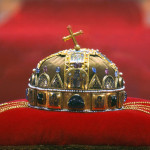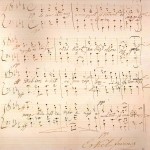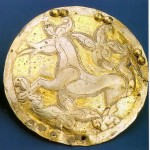 The Magyars have lived in the Carpathian Basin for more than 1000 years. This territory is one of the most ethnically, religiously, and culturally diverse territories in all of Europe. The origins of the Magyar people go back thousands of years, though many details are a mystery. The Hungarian language, one of Europe’s oldest, belongs to the lesser-known Finno-Ugric language family, whose members include the Finns and Estonians. The Magyars separated from these ancient kindred groups around three thousand years ago and have lived at a great geographic distance from them ever since.
The Magyars have lived in the Carpathian Basin for more than 1000 years. This territory is one of the most ethnically, religiously, and culturally diverse territories in all of Europe. The origins of the Magyar people go back thousands of years, though many details are a mystery. The Hungarian language, one of Europe’s oldest, belongs to the lesser-known Finno-Ugric language family, whose members include the Finns and Estonians. The Magyars separated from these ancient kindred groups around three thousand years ago and have lived at a great geographic distance from them ever since.
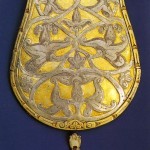 In the course of their wanderings, the nomadic ancestors of the Hungarians came into contact with numerous other peoples, a circumstance that had a considerable impact on the development of Hungarian art and culture. It was during this nomadic period that they took on the equestrian lifestyle and rich, complex culture of the peoples of the great Eastern-European steppes. The Magyars of the Great Conquest settled in the Carpathian Basin around 895 A.D. under the leadership of their great leader Árpád who is famed as the “founder of our country” in Hungary.
In the course of their wanderings, the nomadic ancestors of the Hungarians came into contact with numerous other peoples, a circumstance that had a considerable impact on the development of Hungarian art and culture. It was during this nomadic period that they took on the equestrian lifestyle and rich, complex culture of the peoples of the great Eastern-European steppes. The Magyars of the Great Conquest settled in the Carpathian Basin around 895 A.D. under the leadership of their great leader Árpád who is famed as the “founder of our country” in Hungary.
The founding of the Hungarian State in 1001 is tied to the name of Saint Stephen I (Szent István), the first Hungarian King, whose state-building efforts resulted in the creation of a strong, Western-European style Christian kingdom in the Carpathian Basin. This newfound state was to serve as the decisive political force and centre of culture in the region for the next 500 years. The disintegration of St. Stephen’s multiethnic Medieval kingdom came as a result of the Westward expansion of a true world power: the Ottoman Empire. In 1541, the Ottoman Turks occupied the Hungarian capital at Buda, and for the next several centuries, the territory of Hungary was divided into three parts: the northern realm, ruled from Vienna by the Habsburg dynasty; the central territories, ruled by the Ottomans; and the eastern territories (now part of Romania), governed by the newly established Transylvanian Principality, which was to become an important centre of Hungarian culture.
As the Turkish Conquest came to a halt in the middle of the country, Hungary became a conflict zone between the rival cultures of Christian Europe and Muslim Turkey. The resultant wars, which lasted nearly 150 years, wreaked enormous destruction on Hungary’s culture, economy, and population, and radically altered the ethnic make-up of the country.
The Turks were finally expelled through European co-operation at the end of the 17th century; however, the Hungarian state did not regain its independence, but was made part of the Hapsburg Empire, whose efforts to return its partly Protestant territories to the fold of Catholicism only added to the population’s grievances. Of various subsequent attempts to win national independence, the largest was the 8-year revolution led by Ferenc Rákóczi II, Prince of Transylvania, in the early 18th century. Although the decades to follow were ones of relative peace, characterised by economic, technological, and cultural advancement, only a fraction of Hungary’s national and religious woes had been remedied.
The first half of the 19th century is regarded as the age of national awakening, characterised by movements to reform national politics and economic policy, and to lend support to Hungarian language and culture. It was during this period, for example, that the Hungarian national anthem was born. Eventually, however, growing demand for social (civil) and national reforms led Hungary into turmoil. The revolution and war of independence that broke out on March 15, 1848 – one of the decisive events of modern Hungarian history – has since risen to the level of national mythology. Though integrally related to the wave of revolutions that swept over Europe in 1848 and 1849, it was essentially the only uprising to achieve the status of a successful military resistance. In fact, it was only through the intervention of Tsarist Russia, using an army of a size never before seen on foreign soil, that the Hungarian forces were at last suppressed. Internationally, the two figures that came to symbolise the revolutionary effort were Sándor Petőfi, “poet of liberty,” and statesman Lajos Kossuth.
Though the revolution had failed, in time, Austria came to realize that in order to cooperate with the Hungarians they would need to grant them a certain degree of autonomy. This understanding led to the Compromise of 1867, by which a new Central European power, the Austro-Hungarian Monarchy, was created. Certain internal contradictions notwithstanding, the Compromise resulted in a visible surge in industry and agriculture, while the Hungarian capital city of Budapest, with its new, unique appearance and innovations such as the continent’s first underground railway, rose to become one of the key metropolises of Europe.
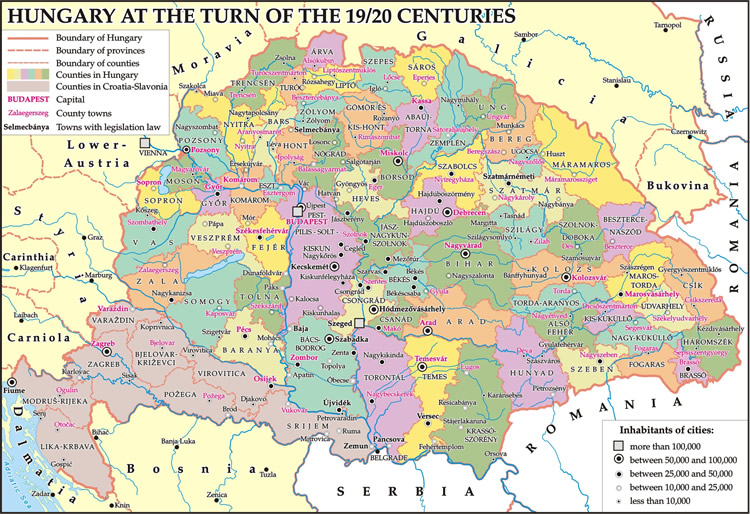
The final disintegration of the Austro-Hungarian Monarchy came upon the end of the First World War, from which Hungary, as a member of the Axis powers, emerged a defeated nation. The former empire was divided into a large number of successor states, and – under the terms of the peace treaty signed in 1920 – more than two-thirds of the territory formerly belonging to the Kingdom of Hungary, home to nearly one-third of the region’s Hungarian-speaking population, was annexed to adjacent countries.
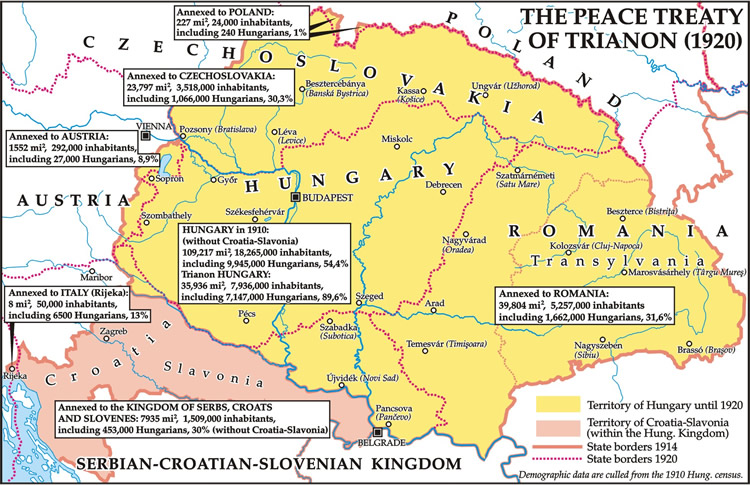
Even today, the limited parliamentary system by which Hungary was governed between the wars is the subject of lively debate. The interwar period or Horthy era (named for regent Miklós Horthy) came to an end during the years of the Second World War – following the occupation of Hungary by the Germans – with the rise to power of the Germanophile Arrow Cross Party. The years to follow were an unmitigated tragedy for both Hungarian society, and its Jewish population. During the Holocaust of 1944, more than half a million people were hauled off to German concentration camps, where most died an agonising death. In the meantime, Hungary itself became a battlefield, a circumstance that claimed a further half million lives. The most destructive single battle was the siege of the Hungarian capital of Budapest. Near the end of the war, Hungary was occupied by the Soviet Union. After just a few years of vigorous reconstruction and multiparty parliamentary democracy, the Communist Party, with the support of the Soviet Union, used election fraud to take power of the country. Within just a few years, Hungary was forced to suffer governance by yet another totalitarian dictatorship.
In 1956, Hungarians rose up against the Stalinist system in a revolution and freedom fight that is regarded as one of the most extraordinary in the history of the 20th century. It was the first time in modern history that a population had revolted against a totalitarian dictatorship and world power. Suppressed by the Soviet army, the revolution was followed by a period of bloody retribution, during which the single-party Communist regime was restored. The system was to fall only with the disintegration of the entire Soviet bloc in 1989.
In 1990, the first democratic, multi-party elections were held, and for the first time in a very long time, Hungary became a free and independent state again, a truly democratic European republic. In 1999, Hungary joined NATO and in 2004, acceded to the European Union.

